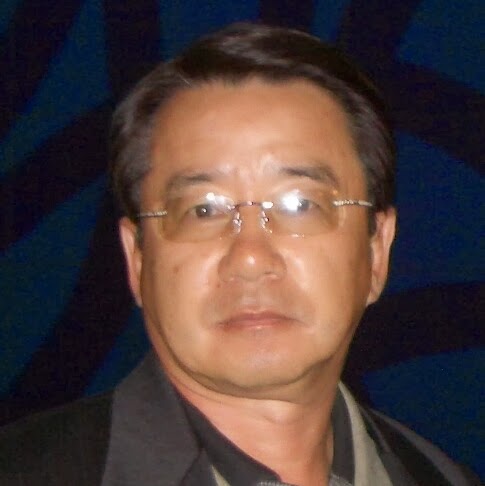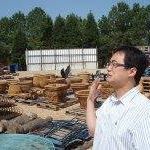Han J Kim
age ~58
from Fremont, CA
- Also known as:
-
- Han Kyu Kim
- Joung Han Kim
- Kim Kyu Han
- Kim Han Joung
- Jhan Kim
Han Kim Phones & Addresses
- Fremont, CA
- Phoenix, AZ
- Sunnyvale, CA
- Chandler, AZ
- 1506 Chestnut Springs Rd, Brentwood, TN 37027 • 6157768408
- Englewood, CO
- Livermore, CA
- Santa Clara, CA
- Maricopa, AZ
Real Estate Brokers

Han Kim, Burlingame CA Agent
view sourceSpecialties:
REO / Bank Owned
Short sales
Residential sales
Luxury homes
First time home buyers
Distressed properties
Probate
Relocation
Short sales
Residential sales
Luxury homes
First time home buyers
Distressed properties
Probate
Relocation
Work:
RE/Max Investments
Burlingame, CA
6503076675 (Phone)
Burlingame, CA
6503076675 (Phone)
Client type:
Home Buyers
Home Sellers
Home Sellers
Property type:
Single Family Home
Condo/Townhome
Multi-family
Condo/Townhome
Multi-family

Han Kim, San Mateo CA Agent
view sourceWork:
RE/Max Investments
San Mateo, CA
6505779200 (Phone)
San Mateo, CA
6505779200 (Phone)

Han Kim, Burlingame CA DRE
view sourceSpecialties:
Buyer's Agent
Listing Agent
Relocation
Foreclosure
Listing Agent
Relocation
Foreclosure
Work:
Keller Williams Realty
1430 Howard Avenue, Burlingame, CA 94010
6503076675 (Office), 6503076675 (Cell)
1430 Howard Avenue, Burlingame, CA 94010
6503076675 (Office), 6503076675 (Cell)
Experience:
13 years
Licenses:
01316341 (DRE)
Lawyers & Attorneys

Han Kon Kim - Lawyer
view sourceLicenses:
New York - Currently registered 2013
Education:
Suny Buffalo Law School

Han Kim - Lawyer
view sourceOffice:
Law Office of Han J. Kim
Specialties:
Business
Family
Immigration
Family
Immigration
ISLN:
913926480
Admitted:
1995
University:
Simon Greenleaf SOL; Anaheim CA; Univ of California at Los Angeles; CA
Name / Title
Company / Classification
Phones & Addresses
BBB Contact
Cavendish Gateway Resort
Hotels
Hotels
6596 Route 13, Charlottetown, PE C1A 7N3
9029632213
9029632213
Web Design And Development Specialist
Cisco Systems, Inc.
Computer Peripheral Equipment
Computer Peripheral Equipment
170 W Tasman Dr, San Jose, CA 95134
Manager, Information Technology
Cisco Systems, Inc.
170 West Tasman Drive, San Jose, CA 95134
Manager
Samsung Semiconductor Inc
Computers and Computer Peripheral Equipment a...
Computers and Computer Peripheral Equipment a...
3655 N 1St St, San Jose, CA 95134
Partner
Altos Ventures
Investors
Investors
2882 Sand Hill Rd Ste 100, Menlo Park, CA 94025
President
TCS Wireless Inc
Miscellaneous Retail Stores
Miscellaneous Retail Stores
4013 Telegraph Ave Ste C, Oakland, CA 94609
Owner
Paramount Auto Glass Berkeley
Auto Glass Replacement
Auto Glass Replacement
2025 Durant Ave, Berkeley, CA 94704
President
ALTOS VENTURES MANAGEMENT, INC
Personal Financing
Personal Financing
2882 Sand Hl Rd STE 100, Menlo Park, CA 94025
6502342600
6502342600
Us Patents
-
Apparatus To Shift To Pre-Charge Mode A Dynamic Circuit Driven By One-Shot Clock Signal During Power Off Mode
view source -
US Patent:7256619, Aug 14, 2007
-
Filed:Apr 4, 2005
-
Appl. No.:11/099186
-
Inventors:Yonghee Im - Pleasanton CA, US
Kyung T. Lee - San Jose CA, US
Han Bin Kim - Pleasanton CA, US -
Assignee:Sun Microsystems, Inc. - Santa Clara CA
-
International Classification:H03K 19/096
H03K 19/20 -
US Classification:326 95, 326121, 365203, 327544
-
Abstract:A method and apparatus for shifting a dynamic circuit, driven by a one-shot clock, to a pre-charge mode, during a power-off mode, is provided. Under certain conditions, a floating node may be present in a dynamic circuit. One approach to prevent floating nodes involves the generation of a new one-shot clock signal that is supplied to the last dynamic circuit in the series of dynamic circuits before the output flop (“the final dynamic circuit”). The new one-shot clock signal is driven to a logical low value when the power-off signal has a logical high value. Another approach to prevent floating nodes involves modifying the final dynamic circuit to include a structure that, when the power-off signal has a logical high value, drives the dynamic node to either a logical high value or a logical low value to prevent the dynamic node from becoming a floating node.
-
Technique For Providing Service Processor Access To Control And Status Registers Of A Module
view source -
US Patent:7519849, Apr 14, 2009
-
Filed:Dec 20, 2005
-
Appl. No.:11/313437
-
Inventors:Han Bin Kim - Pleasanton CA, US
Wei-Yu Chen - Fremont CA, US -
Assignee:Sun Microsystems, Inc. - Santa Clara CA
-
International Classification:G06F 1/12
G06F 5/06 -
US Classification:713600, 713601
-
Abstract:A technique for providing service processor (SP) access to registers, e. g. , control and status registers (CSRs), located within hardware modules of a computer system, ensures access to the CSRs within a predetermine time period. The computer system includes a host module (HM) and a plurality of client modules (CMs). The CMs each include one or more associated registers, and each of the CMs is separately addressable. At least one of the CMs operates at a different clock frequency than the remaining CMs and includes a clock synchronizer, which provides a clock signal to facilitate reading of or writing to the associated registers of the CM by the HM.
-
Deterministic Test Strand Unparking
view source -
US Patent:7707448, Apr 27, 2010
-
Filed:May 3, 2007
-
Appl. No.:11/744052
-
Inventors:Han Bin Kim - Pleasanton CA, US
Yonghee Im - Pleasanton CA, US
Frank C. Chiu - Mountain View CA, US -
Assignee:Oracle America, Inc. - Redwood Shores CA
-
International Classification:G06F 1/12
G01R 31/28 -
US Classification:713401, 713400, 714726, 714729, 714731
-
Abstract:A circuit for deterministic unparking of a strand of a microprocessor having multiple clock domains is described. The circuit includes a first flip-flop and a second flip-flop. Each flip-flop has a data input connected to receive a respective unpark signal, a clock signal at respective clock frequencies, and a respective enable signal. Each enable signal is generated by a respective logic block, each including a counter and each operating at a respective one of the clock frequencies. The second flip-flop has a data input connected to an output of the first flip-flop, and outputs an unpark signal that is used to unpark a strand of the microprocessor in a deterministic manner.
-
Five Volt Tolerant Ttl/Cmos And Cmos/Cmos Voltage Conversion Circuit
view source -
US Patent:58835288, Mar 16, 1999
-
Filed:Mar 20, 1997
-
Appl. No.:8/822375
-
Inventors:Abdul Qayyum Kashmiri - Fremont CA
Junaid Ahmed Ahmed - Milpitas CA
Han My Kim - Fremont CA -
Assignee:Cirrus Logic, Inc. - Fremont CA
-
International Classification:H03K 190948
-
US Classification:326 71
-
Abstract:An input circuit to a semiconductor device may selectively accept different voltage logic levels (e. g. , TTL or CMOS) as selected by a preset selection signal. The selection signal activates an N-type or P-type transistor in the input circuit which alters the threshold switching voltage of the input circuit logic. By altering the input threshold voltage, both TTL and CMOS input signals may be correctly triggered. An additional circuitry may be provided to allow a low voltage circuit (e. g. , 3. 3 Volts) to be tolerant of higher voltage inputs (e. g. , 5 Volts). An isolation transistor isolates the input of the circuit from the high voltage signal, while a pulldown transistor pulls a high logic, high voltage signal down to supply voltage level.
-
Method And Device For Verification Of Intra-Luminal Placement And Patency For Vascular Access Devices
view source -
US Patent:20220386879, Dec 8, 2022
-
Filed:Jun 27, 2022
-
Appl. No.:17/850833
-
Inventors:- Franklin Lakes NJ, US
Eric M. Dinges - Edina MN, US
Han J. Kim - Sunnyvale CA, US -
International Classification:A61B 5/02
A61B 5/0215
A61M 25/06
A61B 17/34
A61B 5/1455
A61B 5/00
A61M 39/02
A61B 5/06 -
Abstract:Methods, apparatus, and systems to non-invasively determine intra-luminal placement and patency of a vascular access device. Patency and/or placement are estimated indirectly by measuring a physiological parameter which is indicative of proper patency and/or placement of the vascular access device in a patient. The measurement is compared to a reference value or calibration. If the comparison indicates indication of proper patency and/or placement, a signal is generated. The signal can be used in a number of ways. One example is to give a user-perceivable alarm or indication of proper patency and/or placement. Non-limiting examples include activating a light, an audible buzzer, a vibration, readable displayed text or graphics, or some combination of the same. The user can then have an indirect and at least semi-automatic way of estimating proper patency and/or placement of a vascular access device.
-
Determining Traffic Control Features Based On Telemetry Patterns Within Digital Image Representations Of Vehicle Telemetry Data
view source -
US Patent:20210271876, Sep 2, 2021
-
Filed:Apr 27, 2021
-
Appl. No.:17/241791
-
Inventors:- San Francisco CA, US
Han Suk Kim - San Francisco CA, US
James Kevin Murphy - San Francisco CA, US
Albert Yuen - San Francisco CA, US -
International Classification:G06K 9/00
G06K 9/62
G06K 9/46 -
Abstract:The present disclosure relates to systems, methods, and non-transitory computer readable media for identifying traffic control features based on telemetry patterns within digital image representations of vehicle telemetry information. The disclosed systems can generate a digital image representation based on collected telemetry information to represent the frequency of different speed-location combinations for transportation vehicles passing through a traffic area. The disclosed systems can also apply a convolutional neural network to analyze the digital image representation and generate a predicted classification of a type of traffic control feature that corresponds to the digital image representation of vehicle telemetry information. The disclosed systems further train the convolutional neural network to determine traffic control features based on training data.
-
Method And Device For Verification Of Intra-Luminal Placement And Patency For Vascular Access Devices
view source -
US Patent:20200390340, Dec 17, 2020
-
Filed:Nov 9, 2018
-
Appl. No.:16/185959
-
Inventors:- Rochester MN, US
Eric Michael Dinges - Edina MN, US
Han Jun Kim - Sunnyvale CA, US -
International Classification:A61B 5/02
A61B 5/0215
A61M 25/06
A61B 17/34
A61B 5/1455
A61B 5/00 -
Abstract:Methods, apparatus, and systems to non-invasively determine intra-luminal placement and patency of a vascular access device. In one form, our device itself remains non-invasive, connecting at the vascular access device's hub outside the patient's body. Patency and/or placement are estimated indirectly by measuring a physiological parameter which is indicative of proper patency and/or placement of the vascular access device in a patient. The measurement is compared to a reference value or calibration. If the comparison indicates indication of proper patency and/or placement, a signal is generated. The signal can be used in a number of ways. One example is to give a user-perceivable alarm or indication of proper patency and/or placement. Non-limiting examples include activating a light, an audible buzzer, a vibration, readable displayed text or graphics, or some combination of the same. The user can then have an indirect and at least semi-automatic way of estimating proper patency and/or placement of a vascular access device. In one aspect of the invention, the technique is able to achieve this end by monitoring and detecting changes in the physiological parameter of systemic vascular pressure via pressure measurement in, at, or near the hub or other portion of a vascular access device that has a lumen placed intra-luminally, and then using the results of that monitoring to indirectly transduce conditions or states indicative of either good placement/patency or bad placement/patency of the vascular access device.
-
Method For Shipping And Handling Of Goods Based On Automatically Operated, Dual-Access Storage Boxes
view source -
US Patent:20200394604, Dec 17, 2020
-
Filed:Aug 28, 2020
-
Appl. No.:17/006353
-
Inventors:Han Bin Kim - Milpitas CA, US
-
International Classification:G06Q 10/08
G07C 9/00 -
Abstract:A method for shipping and handling of goods based on automatically operated, dual-access storage boxes is provided with at least one computerized dual-access storage box, at least one vehicle-authentication module, a central server module, and at least one courier vehicle. the vehicle-authentication module performs an authentication process on the courier vehicle goes for conditional access to the computerized dual-access storage box. The central server module receives an authentication request from the vehicle-authentication module. Accordingly, the vehicle-authentication module performs a first unlock event, if the courier vehicle is granted an authentication confirmation. This automatically opens a vehicle-side door for delivery of a cargo. Similarly, the central server module receives a user unlocking request. Accordingly, the central server module performs a second unlock event if the user unlocking request is verified. Further, the central server module executes the second unlock command wherein a recipient-side door is automatically opened.
License Records
Han Suk Kim
License #:
1201101292
Category:
Cosmetologist License
Han Sun Kim
License #:
1201093557
Category:
Cosmetologist License
Han Elisa Kim
License #:
012228
Category:
Psychologist
Issued Date:
Jan 3, 1995
Type:
PSYCHOLOGY
Han Soo Kim
License #:
5381 - Expired
Category:
Asbestos
Issued Date:
Apr 23, 1998
Effective Date:
Jul 26, 2004
Expiration Date:
Apr 23, 1999
Type:
Asbestos Worker
Han Ah Kim
Address:
19920 N 23 Ave APT 2002M, Phoenix, AZ 85027
License #:
A5264865
Category:
Airmen
Resumes

Han Kim San Jose, CA
view sourceWork:
Santa Clara University
Jan 2012 to 2000
Research Assistant Aker Kvaerner
San Ramon, CA
Jan 2001 to Oct 2004
Mechanical Engineer
Jan 2012 to 2000
Research Assistant Aker Kvaerner
San Ramon, CA
Jan 2001 to Oct 2004
Mechanical Engineer
Education:
Santa Clara University
Santa Clara, CA
Jun 2012
Master of Science in Mechanical Engineering University of California
Berkeley, CA
Dec 2000
Bachelor of Science in Mechanical Engineering
Santa Clara, CA
Jun 2012
Master of Science in Mechanical Engineering University of California
Berkeley, CA
Dec 2000
Bachelor of Science in Mechanical Engineering

Han Kim San Bruno, CA
view sourceWork:
Portfolio Lending
San Mateo, CA
Oct 2001 to Oct 2012
Loan Consultant/Underwriter/ Real Estate Full Spectrum (Subprime division of Countrywide)
San Mateo, CA
Aug 2001 to Oct 2001
Loan specialist Century Funding/Baldwin Mortgage
San Mateo, CA
Aug 1999 to Aug 2001
Loan underwriter/Processor Provident Funding
Burlingame, CA
Dec 1998 to Aug 1999
Underwriter Easton Mortgage / Washington Mutual
San Francisco, CA
Jan 1998 to Oct 1998
Loan Processor KBC
Brisbane, CA
1993 to Jan 1998
News Director / Anchor
San Mateo, CA
Oct 2001 to Oct 2012
Loan Consultant/Underwriter/ Real Estate Full Spectrum (Subprime division of Countrywide)
San Mateo, CA
Aug 2001 to Oct 2001
Loan specialist Century Funding/Baldwin Mortgage
San Mateo, CA
Aug 1999 to Aug 2001
Loan underwriter/Processor Provident Funding
Burlingame, CA
Dec 1998 to Aug 1999
Underwriter Easton Mortgage / Washington Mutual
San Francisco, CA
Jan 1998 to Oct 1998
Loan Processor KBC
Brisbane, CA
1993 to Jan 1998
News Director / Anchor
Education:
University
Seoul, Korea
1986 to 1990
B.S in Economics
Seoul, Korea
1986 to 1990
B.S in Economics
Skills:
Analytical/Underwriting Skills - Highly analytical thinking with demonstrated talent for underwriting, qualifying, identifying, scrutinizing, improving, and streamlining complex work processes Computer/Technical Literacy- Computer-literate performer with extensive software proficiency covering wide variety of applications Flexibility/Adaptability/Mana... Multiple Priorities - Flexible team player who thrives in environments requiring ability to effectively prioritize and juggle multiple concurrent projects. Multicultural Sensitivity/Awareness/ Leadership/Management Skills Personable professional whose strengths include cultural sensitivity and an ability to build rapport with a diverse workforce in multicultural settings. Proven record of Mortgage profession experiences as an underwriter & Consultant at multiple banks and brokerage. Bilingual in Korean/English.
Medicine Doctors

Han Kim
view sourceSpecialties:
Diagnostic Radiology, Vascular & Interventional Rad
Work:
Howard University Hospital Radiology
2041 Georgia Ave NW, Washington, DC 20060
2028651576 (phone), 2028651900 (fax)
2041 Georgia Ave NW, Washington, DC 20060
2028651576 (phone), 2028651900 (fax)
Education:
Medical School
University of Illinois, Chicago College of Medicine
Graduated: 2002
University of Illinois, Chicago College of Medicine
Graduated: 2002
Languages:
English
Description:
Dr. Kim graduated from the University of Illinois, Chicago College of Medicine in 2002. He works in Washington, DC and specializes in Diagnostic Radiology and Vascular & Interventional Rad.

Han J. Kim
view sourceSpecialties:
Radiation Oncology
Work:
LA Cancer Center
500 S Virgil Ave STE 502, Los Angeles, CA 90020
2134846600 (phone), 2133880919 (fax)
500 S Virgil Ave STE 502, Los Angeles, CA 90020
2134846600 (phone), 2133880919 (fax)
Education:
Medical School
Kyungpook Natl Univ, Coll of Med, Taegu, So Korea
Graduated: 1980
Kyungpook Natl Univ, Coll of Med, Taegu, So Korea
Graduated: 1980
Languages:
English
Korean
Spanish
Korean
Spanish
Description:
Dr. Kim graduated from the Kyungpook Natl Univ, Coll of Med, Taegu, So Korea in 1980. He works in Los Angeles, CA and specializes in Radiation Oncology. Dr. Kim is affiliated with Hollywood Presbyterian Medical Center and St Vincent Medical Center.

Han Kim
view sourceSpecialties:
Diagnostic Radiology, Neuroradiology
Work:
Main Street Radiology
5645 Main St, Flushing, NY 11355
7186701594 (phone), 7186617716 (fax)
Main Street RadiologyMain Street Radiology Bayside
3225 Francis Lewis Blvd, Flushing, NY 11358
7184281500 (phone), 7184282475 (fax)
Main Street Radiology
4401 Francis Lewis Blvd STE 1, Bayside, NY 11361
7184281500 (phone), 7184282475 (fax)
5645 Main St, Flushing, NY 11355
7186701594 (phone), 7186617716 (fax)
Main Street RadiologyMain Street Radiology Bayside
3225 Francis Lewis Blvd, Flushing, NY 11358
7184281500 (phone), 7184282475 (fax)
Main Street Radiology
4401 Francis Lewis Blvd STE 1, Bayside, NY 11361
7184281500 (phone), 7184282475 (fax)
Education:
Medical School
UMDNJ Robert Wood Johnson Medical School
Graduated: 1990
UMDNJ Robert Wood Johnson Medical School
Graduated: 1990
Languages:
Chinese
English
Korean
English
Korean
Description:
Dr. Kim graduated from the UMDNJ Robert Wood Johnson Medical School in 1990. He works in Flushing, NY and 2 other locations and specializes in Diagnostic Radiology and Neuroradiology. Dr. Kim is affiliated with New York-Presbyterian Queens and Queens Hospital Center.

Han Na Kim
view sourceSpecialties:
Internal Medicine

Han J Kim
view sourceSpecialties:
Nuclear Medicine
Radiology
Therapeutic Radiology
Radiation Oncology
Medical Oncology
Radiology
Therapeutic Radiology
Radiation Oncology
Medical Oncology
Education:
Kyungpook National University (1980)
Myspace
Googleplus

Han Kim
Work:
Ford Motor Company
Tagline:
Engineer for Ford/Lincoln Motor Co. Developed the US Fiesta. Moderate. Gamer. Undecided. JackMichaelson on Ingress

Han Kim
Relationship:
Married

Han Kim
Education:
Community College of Denver

Han Kim
About:
EXO,Fighting!!! LuHan,my favorite,just smile.
Tagline:
Just hold your dream,there is nothing impossible.
Bragging Rights:
In college

Han Kim

Han Kim

Han Kim

Han Kim
Classmates

Han Kim
view sourceSchools:
Oshkosh State Teacher's College Oshkosh WI 1958-1962
Community:
Peter Gorr, Robert Diskowski, Gary Longrie, Ruth Langholz, Philip Fritz, Phillip Lawson

Han Kim
view sourceSchools:
Hancock Park Elementary School Los Angeles CA 1990-1994
Community:
Fred Ost, Rick Barbera, John Andretti, Anita Lerner, Shannon Rutherford

Han Kim
view sourceSchools:
St. Vincent De Paul School Phoenix AZ 1979-1982
Community:
Dawna Skvarek

Han Kim
view sourceSchools:
Illinois Mathematics & Science Academy Aurora IL 1991-1994
Community:
Marlon Hall, Kerri Lockhart, Jenny Gable, Marina Sivilay

Han Kim
view sourceSchools:
Benson Elementary School Brooklyn NY 1986-1990
Community:
Marylu Espinosa, Jose Rivera, Jackeline Santiago, Johanna Esposito, Shannon Walsh, Neal Finkelstein

Han Sol Kim
view sourceSchools:
American Embassy School New Delhi India 2004-2008
Community:
Ellen Schaefer, Patrick Hunt, Fred Thomas

Han Hee Kim
view sourceSchools:
Anglican Int'L School Jerusalem Israel 1987-1998
Youtube
Flickr
Plaxo

Han Kim
view sourcestudy effect of fermented soybean on human health at the molecular level using network analysis.
Interested in inflammation and prevention of human breast... study effect of fermented soybean on human health at the molecular level using network analysis.
Interested in inflammation and prevention of human breast cancer

Jong Han Kim
view sourcePaul, Hastings, Janofsky & Walker LLP

Han Sung Kim
view sourcePrincipal Engineer at Samsung Electronics

han kim
view sourceNetwork Engineer at AT&T

Han Joong Kim
view source
Chang Han Kim
view source
Han Byeol Kim
view source
Eun Han Kim
view source
Jae Han Kim
view source
Tae Han Kim
view source
Jo Han Kim
view source
Han Kim
view sourceGet Report for Han J Kim from Fremont, CA, age ~58













